Contents
- I. Introduction to Ragdoll Cats
- II. Understanding the Temperament of Ragdoll Cats
- III. Factors that Affect Ragdoll Cats’ Compatibility with Other Cats
- IV. Do Ragdoll Cats Prefer Living Alone or with Other Cats?
- V. Tips for Introducing a Ragdoll Cat to Other Cats
- VI. Frequently Asked Questions about Ragdoll Cats and their Interaction with Other Cats
- 1. Can Ragdoll cats live with other cats?
- 2. How do Ragdoll cats behave towards other cats?
- 3. Are Ragdoll cats territorial?
- 4. How should I introduce a Ragdoll cat to my existing cat?
- 5. What if my existing cat doesn’t get along with the Ragdoll?
- 6. Are there any specific signs of aggression I should watch out for?
- 7. What can I do to encourage positive interactions between my Ragdoll cat and other cats?
- 8. Can Ragdoll cats be introduced to other pets besides cats?
- 9. How long does it usually take for Ragdoll cats to adjust to living with other cats?
- 10. Are there any specific behaviors I should be concerned about when Ragdoll cats interact with other cats?
- VII. Best Ragdoll Cat Breeds for Multi-Cat Households
I. Introduction to Ragdoll Cats
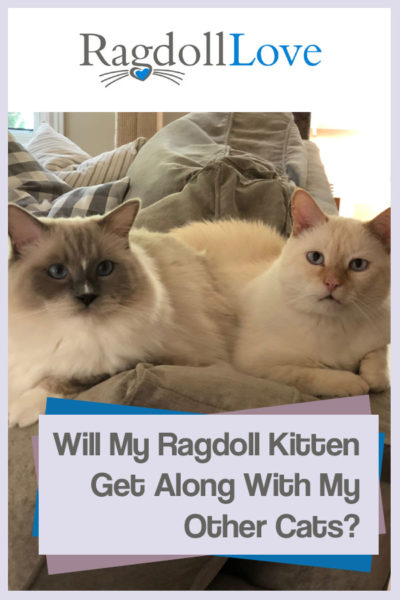
Ragdoll cats are a unique and fascinating breed that has gained popularity among cat lovers. Known for their striking appearance and docile nature, Ragdolls have become a sought-after choice for those looking to add a furry companion to their homes. In this section, we will delve into the world of Ragdoll cats and explore what makes them so special.
The Origin of Ragdoll Cats
The history of Ragdoll cats dates back to the 1960s when a breeder named Ann Baker developed this breed in California, USA. The breed’s name reflects their tendency to become totally relaxed when picked up, just like a ragdoll. The original Ragdolls were the result of breeding a Persian cat with a Birman and a Burmese, resulting in their distinctive appearance and gentle temperament.
Physical Characteristics
Ragdolls are large, muscular cats with semi-long hair and striking blue eyes. Their coats come in various patterns and colors, including seal, blue, chocolate, lilac, flame, cream, and tortoiseshell. One unique characteristic of Ragdolls is their color-pointed pattern, similar to that of Siamese cats. However, Ragdolls have a softer and more muted coloration.
Temperament and Personality
Ragdoll cats are known for their calm and affectionate nature, making them excellent companions for individuals and families alike. They are often referred to as “puppy-like cats” due to their tendency to follow their owners around and crave attention. Ragdolls are highly sociable and enjoy the company of humans and other pets, making them great additions to multi-pet households.
Caring for Ragdoll Cats
Proper care is essential to ensure the health and well-being of Ragdoll cats. Due to their semi-long hair, they require regular grooming to prevent matting and to keep their coat in optimal condition. Additionally, providing them with a balanced diet, regular exercise, and a stimulating environment will contribute to their overall happiness and longevity.
Conclusion
II. Understanding the Temperament of Ragdoll Cats
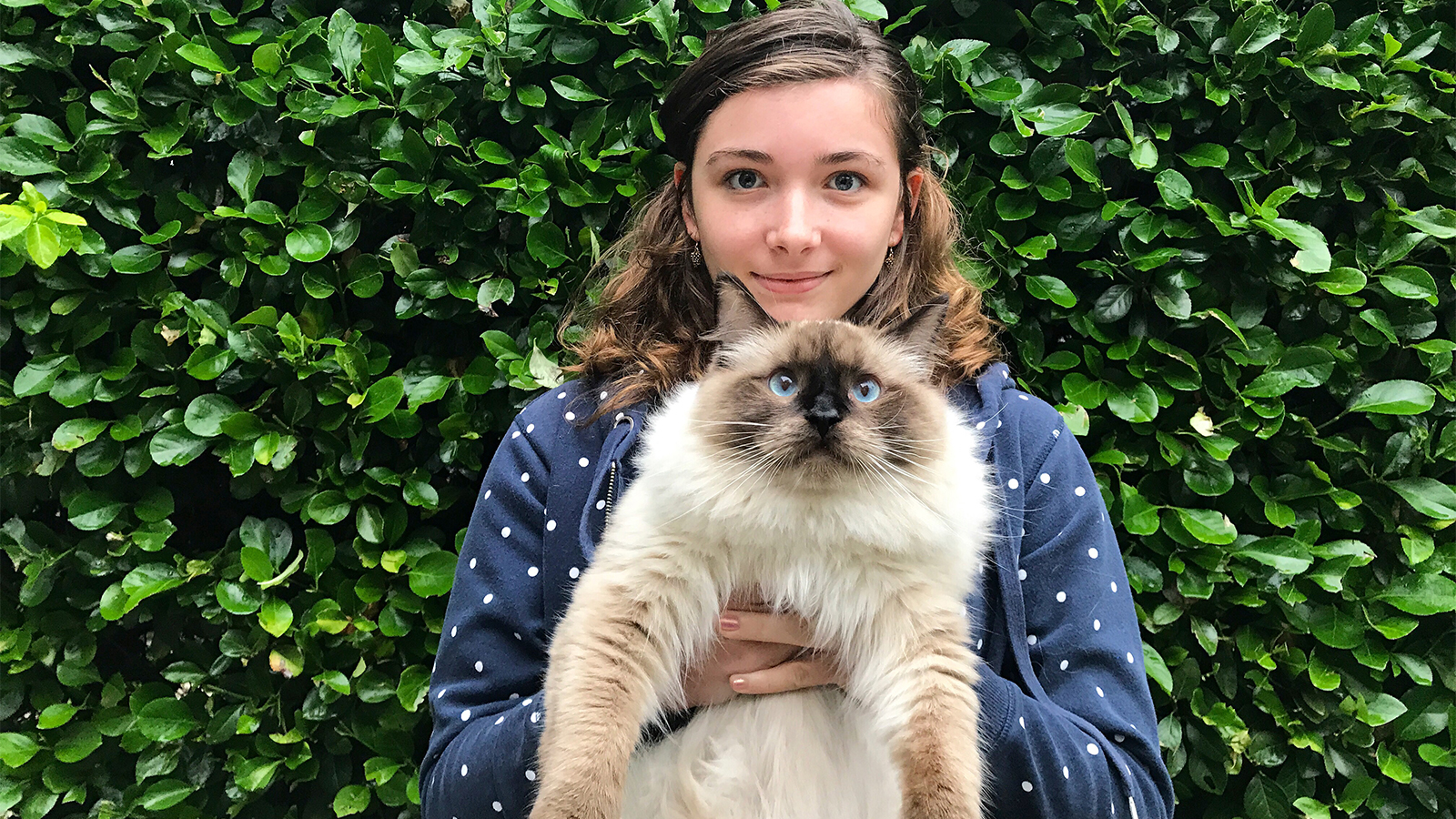
Ragdoll cats are known for their gentle and laid-back nature, making them a popular choice among cat lovers. To truly understand their temperament, it is important to delve into their unique characteristics and behavior traits.
Ragdolls: The Perfect Companion
One of the most remarkable aspects of Ragdoll cats is their exceptional sociability. These cats thrive on human companionship and love to be a part of the family. Whether it’s snuggling up on the couch or following you around the house, Ragdolls are known for their constant need for human interaction.
In addition, Ragdoll cats are generally tolerant and patient, making them an ideal choice for households with children or other pets. They are not easily startled and are known to adapt well to various living situations.
Gentle Giants: Size and Strength
Ragdolls are often referred to as “gentle giants” due to their large size and sturdy build. Despite their impressive size, they have a soft and gentle demeanor. These cats are not known to be aggressive or territorial, making them a great fit for multi-cat households.
It’s important to note that Ragdolls may take longer to reach their full size compared to other cat breeds. They continue to grow until they are around four years old, so be prepared for a cat that may take up some extra space as they mature!
Playful Personalities
While Ragdolls are known for their relaxed nature, they still possess a playful side. They enjoy interactive playtime with their owners, often chasing toys and engaging in gentle wrestling matches. This playful personality adds to the overall charm of owning a Ragdoll cat.
It’s worth mentioning that Ragdolls are not known to be high-energy cats. They are content with moderate exercise and tend to be more laid-back compared to some other breeds. However, providing them with regular play sessions and interactive toys will help keep them mentally stimulated and happy.
Easygoing and Easy to Love
If you are considering bringing a Ragdoll cat into your life, be prepared for a loyal and loving companion who will bring joy to your home for years to come.
III. Factors that Affect Ragdoll Cats’ Compatibility with Other Cats
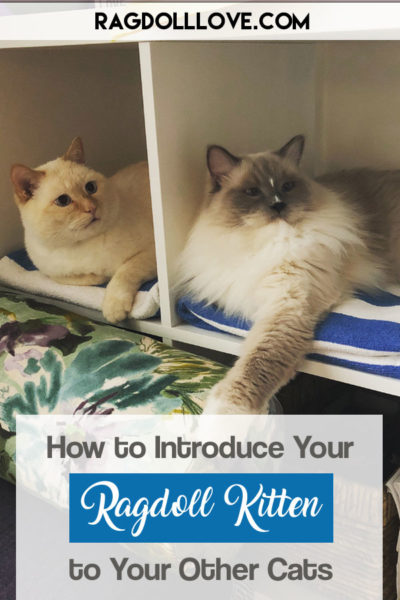
When introducing a Ragdoll cat to other cats, it is important to consider several factors that can affect their compatibility and ensure a harmonious living environment for all feline companions involved.
1. Age and Socialization
The age and socialization history of both the Ragdoll cat and the other cats play a significant role in their ability to get along. Kittens have a higher chance of adapting and forming bonds with other cats compared to adult cats. Proper socialization from a young age can greatly enhance their ability to interact positively with other felines.
2. Personality and Temperament
Each cat has its own unique personality and temperament, and this can greatly influence their compatibility with other cats. Ragdolls are known for their laid-back and friendly nature, making them generally more accepting of other cats. However, it is essential to consider the temperament of the other cats as well to ensure a good match.
3. Territory and Space
Cats are territorial animals, and introducing a new cat into an established cat’s territory can lead to conflicts. It is crucial to provide enough space and resources for each cat to establish their own territory and have room to retreat if needed. Gradual introductions and supervised interactions can help them adjust to the new dynamics more smoothly.
4. Gender and Neuter/Spay Status
The gender of the cats and their neuter/spay status can affect their compatibility. Generally, introducing a neutered/spayed Ragdoll cat to another neutered/spayed cat of the opposite gender tends to have a higher success rate. Male-male or female-female introductions can be more challenging, especially if they are not neutered/spayed.
5. Introductions and Positive Reinforcement
Proper introductions are crucial when bringing a new cat into the household. Gradual introductions, where the cats can gradually get used to each other’s scent and presence, can help alleviate tension and reduce the chances of aggressive behavior. Using positive reinforcement techniques, such as treats and praise, can also help create positive associations between the cats.
By considering these factors and taking the necessary steps to ensure a smooth introduction, you can increase the chances of a successful and harmonious relationship between your Ragdoll cat and other cats in your home.
IV. Do Ragdoll Cats Prefer Living Alone or with Other Cats?
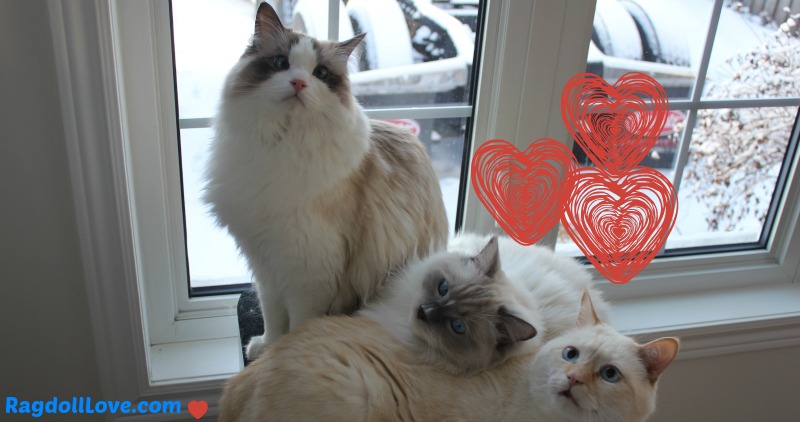
Ragdoll cats are known for their social nature and typically enjoy the company of other cats. While some may prefer living alone, many Ragdolls thrive in households with other feline companions. Here, we explore the factors that influence their preference and provide insights into creating a harmonious living environment for your Ragdoll.
1. Natural Instincts and Breed Characteristics
Ragdolls have a gentle and laid-back temperament, making them well-suited for multi-cat households. These cats are not aggressive and generally get along with other cats, both within their breed and other breeds. Their friendly and sociable nature can help create a positive dynamic between them and their feline roommates.
2. Companionship and Mental Stimulation
Living with other cats can provide Ragdolls with constant companionship and mental stimulation. Cats are social animals by nature, and having a playmate can prevent boredom and loneliness. Interacting with other cats can also help them develop and maintain their social skills, contributing to their overall well-being.
3. Consider Individual Preferences
While Ragdolls generally enjoy the company of other cats, it’s essential to consider their individual preferences. Some cats may have a more solitary nature and prefer to have their space. It’s crucial to observe your Ragdoll’s behavior to determine whether they are comfortable with other cats or if they would thrive better as the only feline in the household.
4. Introducing New Cats
If you decide to introduce a new cat to your Ragdoll’s living space, it’s essential to do so gradually and under controlled circumstances. Start by scent swapping, where you offer each cat an item with the other cat’s scent. This helps them get familiar with each other’s scent before an actual meeting. Gradually increase their interaction while closely monitoring their behavior to ensure a smooth introduction.
5. Providing Enough Resources
When living with multiple cats, it’s crucial to provide enough resources to avoid any potential conflicts. Each cat should have their litter box, food and water bowls, and individual spaces for rest and relaxation. This helps prevent competition and reduces stress, creating a harmonious living environment for both your Ragdoll and other cats.
V. Tips for Introducing a Ragdoll Cat to Other Cats
:strip_icc()/GettyImages-145577979-d97e955b5d8043fd96747447451f78b7.jpg)
Introducing a new cat to your household can be an exciting but challenging experience, especially when it comes to introducing a Ragdoll cat to other cats. Ragdolls are known for their friendly and social nature, but every cat has its own personality, and some may take longer to adjust to new furry companions. Here are some tips to help make the introduction process smoother and increase the chances of a harmonious multi-cat household.
1. Gradual Introduction
When introducing a Ragdoll cat to other cats, it’s crucial to take it slow. Start by keeping the new cat in a separate room with all its necessities while allowing the cats to sniff each other under the door. This gradual approach helps them become familiar with each other’s scents before face-to-face interactions.
2. Scent Exchange
A successful introduction relies heavily on scent exchange. Rub a cloth or towel on one cat and then place it near the other cat’s feeding area. This helps them associate each other’s scent with positive experiences like mealtime, thereby creating positive associations with the new cat.
3. Controlled Visual Contact
After a few days of scent exchange, you can begin controlled visual contact. Use a baby gate or a cracked open door to allow the cats to see each other without direct physical interaction. This helps them gauge each other’s reactions and reduces the chances of a sudden aggressive encounter.
Engaging the cats in shared play sessions can be an effective way to foster positive associations. Use interactive toys or laser pointers to direct their attention away from potential territorial disputes and towards a fun and engaging activity. This shared experience can help them bond and associate each other’s presence with enjoyable playtime.
5. Supervised Face-to-Face Meetings
Once the cats seem comfortable with each other’s scents and visual presence, you can start supervised face-to-face meetings. Keep these initial encounters short and controlled, providing each cat with an escape route if needed. Gradually increase the duration of these sessions as the cats become more comfortable in each other’s presence.
Remember, patience is key when introducing Ragdoll cats to other cats. Each cat has its own pace of adjustment, and forcing interactions can lead to stress and aggression. By following these tips and monitoring their progress, you can help create a peaceful and harmonious environment for your furry companions.
VI. Frequently Asked Questions about Ragdoll Cats and their Interaction with Other Cats
1. Can Ragdoll cats live with other cats?
Yes, Ragdoll cats are generally social and can get along well with other cats. They have a friendly and non-aggressive nature, making them more likely to form positive relationships with other feline companions.
2. How do Ragdoll cats behave towards other cats?
Ragdoll cats are known for their gentle and calm demeanor. They usually exhibit friendly behaviors towards other cats, such as rubbing against them, grooming each other, or simply coexisting peacefully in the same space.
3. Are Ragdoll cats territorial?
While Ragdoll cats can establish their own personal space, they are not typically territorial in the same way as some other cat breeds. They are more likely to share their living environment harmoniously with other cats.
4. How should I introduce a Ragdoll cat to my existing cat?
When introducing a Ragdoll cat to your existing cat, it’s essential to do so gradually. Start by keeping them separated in different rooms and gradually allow supervised interactions. This allows them to become familiar with each other’s scents and presence before full introductions.
5. What if my existing cat doesn’t get along with the Ragdoll?
If your existing cat is not getting along with the Ragdoll, it’s crucial to provide them with separate spaces and resources. This includes separate litter boxes, feeding areas, and resting spots. Additionally, seek guidance from a veterinarian or animal behaviorist for further advice on managing the situation.
6. Are there any specific signs of aggression I should watch out for?
Signs of aggression in cats can include hissing, growling, swatting, or puffed-up fur. If you observe any of these behaviors during interactions between your Ragdoll cat and other cats, it’s important to intervene and separate them to prevent any potential harm.
7. What can I do to encourage positive interactions between my Ragdoll cat and other cats?
Providing plenty of vertical spaces, such as cat trees or shelves, can help cats establish their territories and reduce potential conflicts. Additionally, providing interactive toys and playtime for all cats can help them bond and release any pent-up energy.
8. Can Ragdoll cats be introduced to other pets besides cats?
Ragdoll cats can generally adapt well to living alongside other pets, including dogs and even small animals like rabbits. However, it’s crucial to supervise their interactions and ensure the safety and well-being of all animals involved.
9. How long does it usually take for Ragdoll cats to adjust to living with other cats?
The time it takes for Ragdoll cats to adjust to living with other cats can vary. It may take a few weeks or even several months for them to establish a harmonious relationship. Patience and gradual introductions are key to a successful integration process.
10. Are there any specific behaviors I should be concerned about when Ragdoll cats interact with other cats?
If you notice any signs of distress, fear, or excessive aggression during interactions between Ragdoll cats and other cats, it’s important to address the situation promptly. Seeking professional advice from a veterinarian or animal behaviorist can help identify and manage any potential issues.
VII. Best Ragdoll Cat Breeds for Multi-Cat Households
Ragdoll Cat Breed
The Ragdoll cat breed is one of the most popular choices among cat lovers. Known for their stunning blue eyes, silky fur, and docile nature, Ragdolls have gained a loyal following over the years. These cats are large in size, with males weighing between 12 to 20 pounds and females ranging from 8 to 15 pounds.
One of the reasons why people prefer Ragdoll cats is their friendly and affectionate nature. They are known for being gentle and loving, making them great companions for families, couples, and individuals alike. Ragdolls are also known for their tendency to go limp when held, hence the name “Ragdoll.” This unique trait makes them easy to handle and a joy to cuddle with.
In terms of features, Ragdolls have a semi-long coat that requires regular brushing to keep it in top condition. Their fur comes in a variety of colors and patterns, including seal, blue, chocolate, lilac, and more. Ragdolls are also known for their striking blue eyes, which add to their overall charm.
When it comes to additional features, Ragdolls are generally healthy cats with minimal genetic issues. However, they can be prone to certain conditions such as hypertrophic cardiomyopathy (HCM) and polycystic kidney disease (PKD). It is important for Ragdoll owners to be aware of these potential health concerns and schedule regular check-ups with a veterinarian.
As for warranty and service, reputable breeders often provide a health guarantee for their Ragdoll kittens. This gives buyers peace of mind knowing that their new furry family member is covered in case of any health issues that may arise. It’s important to choose a breeder who prioritizes the well-being of their cats and provides ongoing support even after the purchase.
When considering a Ragdoll cat, it can be helpful to hear from other users who have experience with this breed. Many Ragdoll owners rave about their cats’ sweet and gentle nature, noting their ability to get along well with children and other pets. Ragdolls are often described as being sociable and easygoing, making them a great addition to any household.
While Ragdolls have many positive attributes, it’s important to consider the potential downsides as well. These cats are known for their heavy shedding, which means regular grooming is necessary to keep their coats looking their best. Additionally, Ragdolls are not the most active breed and may not be the best choice for those seeking a highly energetic or playful cat.
In conclusion, Ragdoll cats are a popular choice for cat lovers due to their friendly nature, striking appearance, and gentle demeanor. They make wonderful companions and are known for getting along well with children and other pets. However, it’s important to be aware of their grooming needs and potential health concerns. Ultimately, Ragdolls offer a unique and loving presence in any home.
2. Maine Coon Cat Breed
The Maine Coon cat breed is one of the most popular and beloved breeds among cat enthusiasts. Known for their large size, friendly nature, and stunning appearance, Maine Coons make wonderful pets for individuals and families alike.
One of the reasons why people prefer the Maine Coon breed is their gentle and sociable temperament. These cats are known for their friendly and affectionate nature, often getting along well with children and other pets in the household. Their playful and outgoing personality makes them a joy to have around.
In addition to their wonderful personalities, Maine Coons also have unique and attractive features. They are known for their large size, with males weighing between 13 to 18 pounds on average, and females weighing between 8 to 12 pounds. Their long, bushy tails and tufted ears add to their majestic appearance. Maine Coons come in a variety of colors and patterns, making each cat unique and beautiful.
When it comes to additional features, Maine Coons have impressive hunting skills. They are excellent mousers and have a natural instinct for tracking and catching prey. This makes them great companions for individuals who are looking for a cat that can help keep their home free from mice and other small pests.
Maine Coons also come with a warranty and service guarantee. Reputable breeders often provide a health guarantee for their kittens, ensuring that they are free from any genetic diseases or health issues. This gives new owners peace of mind and reassurance that they are bringing home a healthy and well-cared-for cat.
When it comes to other users’ opinions, Maine Coon cat owners are often delighted with their choice of breed. Many rave about their Maine Coons’ friendly and affectionate nature, as well as their intelligence and adaptability. These cats are known to form strong bonds with their owners and are often described as being more dog-like in their loyalty and behavior.
As with any breed, there are pros and cons to consider. Maine Coons require regular grooming due to their long and thick fur. Additionally, their large size means they need plenty of space to roam and play. However, the love and companionship they bring more than make up for the extra care and space requirements.
In conclusion, the Maine Coon cat breed is a popular choice for cat lovers due to their friendly nature, unique features, and impressive hunting skills. With their gentle temperament and stunning appearance, Maine Coons make wonderful companions for individuals and families alike.
3. Siamese Cat Breed
The Siamese cat breed is known for its striking blue almond-shaped eyes, short coat, and distinctive color points on its ears, face, paws, and tail. This breed is highly sought after by cat enthusiasts due to its unique appearance and lively personality.
One reason people prefer Siamese cats is their outgoing and sociable nature. They are known for their love of attention and are often described as being dog-like in their behavior. Siamese cats enjoy being part of the family and are known to form strong bonds with their owners.
Another feature that sets Siamese cats apart is their intelligence. They are highly perceptive and can quickly learn new tricks or commands. Siamese cats are also known to be talkative and will engage in conversation with their owners, making them excellent companions for individuals who enjoy interactive pets.
When it comes to additional features, Siamese cats have a unique coat coloration known as “point coloration.” This means that their body is lighter in color while their ears, face, paws, and tail are darker. This striking coat pattern is one of the distinct characteristics of the Siamese breed.
Siamese cats also come with a warranty and service package. Reputable breeders often provide health guarantees for their kittens, ensuring that they are free from any genetic health issues. Additionally, some breeders offer lifetime support and assistance to new cat owners, providing guidance and advice throughout the cat’s life.
Considering other users’ opinions, many Siamese cat owners rave about their playful and affectionate nature. They often mention how their Siamese cats bring joy and entertainment to their households. However, it is important to note that each cat is unique, and individual personalities may vary.
As for the pros and cons, Siamese cats require regular social interaction and mental stimulation. While this makes them great companions, it may not be suitable for individuals who are away from home for extended periods. Additionally, their talkative nature may not be ideal for those seeking a quieter feline companion.
In conclusion, the Siamese cat breed is a popular choice among cat lovers due to its striking appearance, sociable nature, intelligence, and unique coat pattern. While they require attention and mental stimulation, Siamese cats make wonderful companions for individuals seeking an interactive and lively pet.
4. British Shorthair Cat Breed
The British Shorthair cat breed is a popular choice among cat lovers for several reasons. Known for their round faces, dense coats, and sturdy build, British Shorthairs have a distinct appearance that sets them apart from other cat breeds.
One of the main reasons why people prefer the British Shorthair breed is their calm and gentle nature. These cats are known to have a laid-back temperament, making them great companions for families and individuals alike. They are not overly demanding and are content with spending quality time with their owners.
In addition to their personality, the British Shorthair breed also possesses certain physical features that make them highly sought after. Their dense and plush coats require minimal grooming, making them low-maintenance pets. This is especially beneficial for busy individuals who don’t have a lot of time to devote to grooming their cats.
Furthermore, British Shorthairs are known for their robust health and longevity. With proper care, these cats can live a long and healthy life. Their sturdy build and strong immune system make them less prone to certain health issues commonly found in other breeds.
When it comes to warranty and service, reputable breeders often provide health guarantees for their British Shorthair kittens. This gives new owners peace of mind knowing that they are getting a healthy and well-cared-for pet.
Considering other users’ opinions, many British Shorthair owners rave about their cats’ loving and affectionate nature. They often describe them as being sociable and easy to get along with, making them great companions for both adults and children.
As with any breed, there are pros and cons to owning a British Shorthair. Some potential downsides include their tendency to be independent and their need for mental stimulation. However, these traits can be easily managed with the right approach to cat care.
In conclusion, the British Shorthair cat breed offers a combination of desirable traits that make them a popular choice among cat enthusiasts. Their calm temperament, low-maintenance grooming, robust health, and longevity are just a few reasons why people gravitate towards this breed. If you’re looking for a friendly and easy-going companion, the British Shorthair might be the perfect choice for you.
5. Persian Cat Breed
Persian cats are one of the most popular cat breeds among pet owners. Their distinctive long fur and sweet temperament make them a favorite choice for many cat lovers. Let’s dive into the features, additional features, warranty and service, opinions of other users, and the pros and cons of owning a Persian cat.
One of the main reasons why people prefer Persian cats is their beautiful coat. Their long and silky fur requires regular grooming to keep it in good condition, but it is worth the effort for many cat enthusiasts. The Persian breed comes in a variety of colors and patterns, adding to their charm and appeal.
In addition to their stunning appearance, Persian cats have a calm and gentle nature. They are known for being affectionate and loving companions, making them a great choice for families and individuals alike. Their laid-back personality makes them easy to handle and a joy to have around the house.
When it comes to additional features, Persian cats are known for their expressive eyes and flat faces. These unique characteristics give them a distinctive look that sets them apart from other cat breeds. Their large, round eyes are often described as mesmerizing, adding to their overall allure.
When purchasing a Persian cat, it is important to consider the warranty and service provided by the breeder or seller. Reputable breeders typically offer health guarantees and support to ensure the well-being of their cats. It is crucial to choose a reliable source to ensure you receive a healthy and well-cared for Persian cat.
Opinions of other users can provide valuable insights for prospective Persian cat owners. Many people who have owned Persian cats rave about their gentle nature, loyalty, and beauty. They often highlight their calm demeanor, making them a perfect choice for those seeking a relaxed and peaceful companion.
Like any cat breed, Persian cats have their pros and cons. On the positive side, their long fur and distinctive appearance make them a delight to look at. Their affectionate nature and calm temperament make them great companions for all types of households. However, their long fur requires regular grooming and maintenance, which can be time-consuming and costly.
In conclusion, Persian cats are a popular choice for many cat lovers due to their stunning appearance, gentle nature, and unique features. Their long fur and expressive eyes make them a visually striking breed. While grooming can be demanding, the joy and affection they bring to their owners outweigh the challenges. If you are looking for a beautiful and loving companion, a Persian cat may be the perfect choice for you.
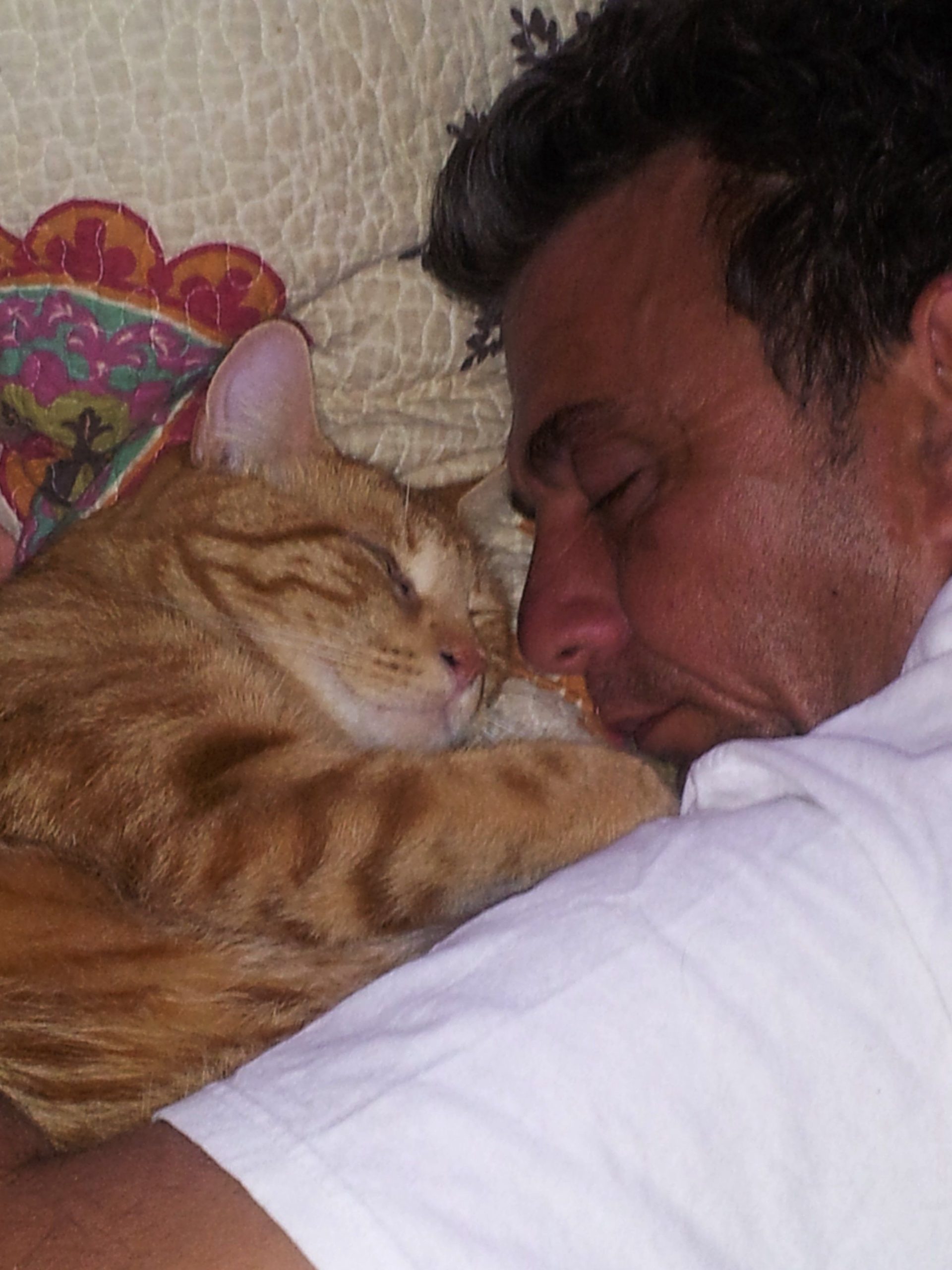
Jackson is an accomplished content writer with a flair for captivating storytelling. With a Bachelor’s degree in English Literature from the prestigious University of California, Berkeley, Hunter’s educational background has honed his writing skills to perfection. His love for felines is evident in his extensive knowledge of cat behavior and care, making him an expert in the field. Hunter’s passion for cats has led him to contribute insightful articles to various online platforms, providing valuable information and tips to cat owners worldwide. With his exceptional writing abilities and deep understanding of cats, Hunter continues to create engaging content that resonates with readers and leaves a lasting impact.
